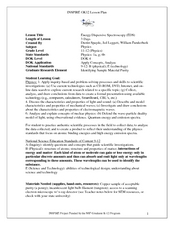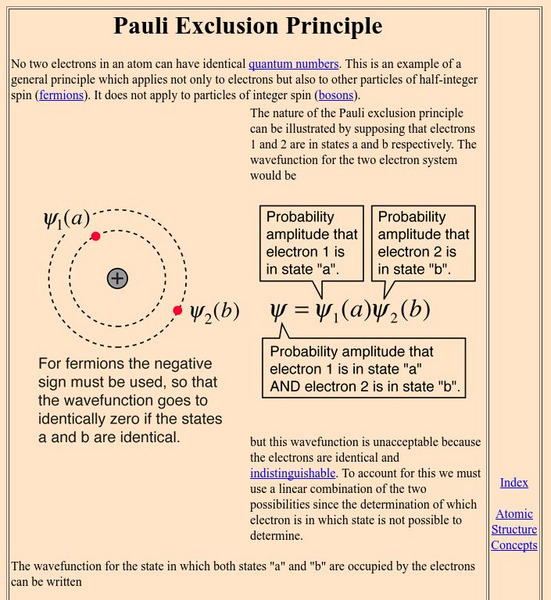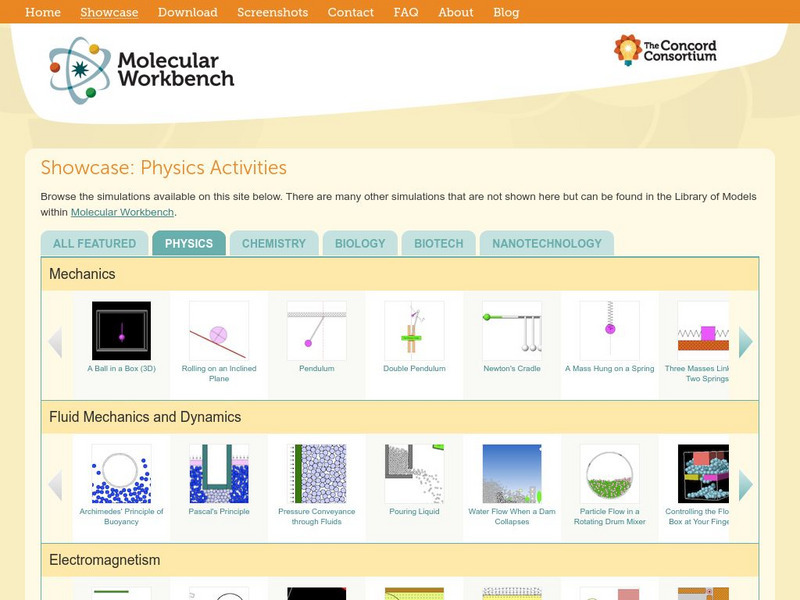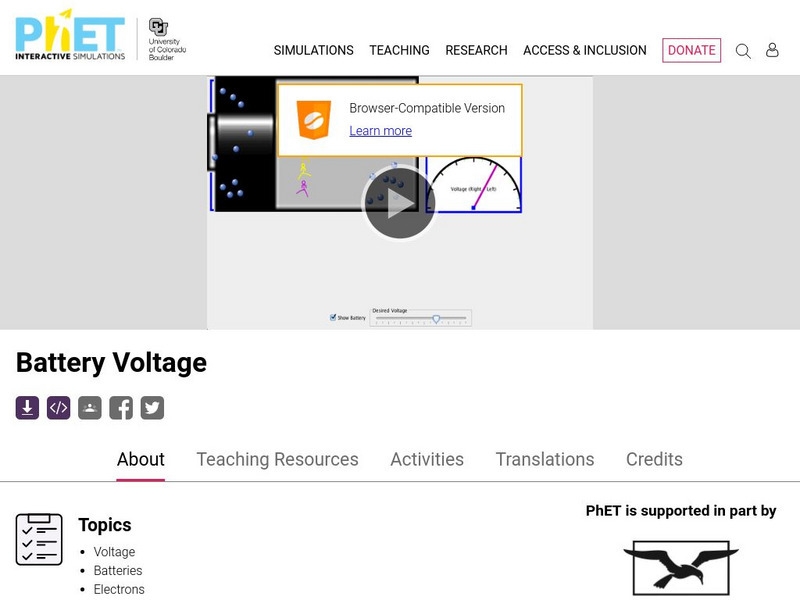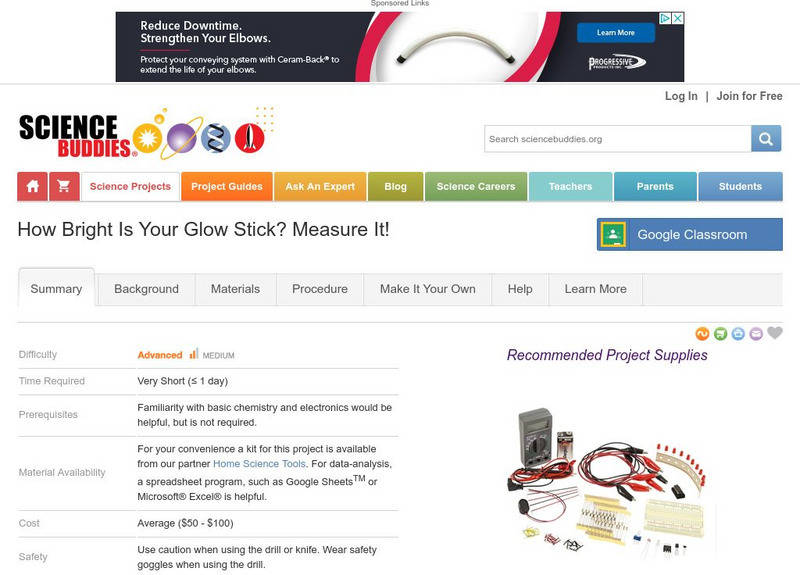Curated OER
Periodic Table Puzzle
In this chemistry worksheet, students use the clues given at the bottom of the sheet to solve the crossword puzzle on the Periodic Table. They describe the number of protons and electrons some elements posses, as well as identify their...
Curated OER
Element Trading Cards
In this chemistry worksheet, students use the Internet to research the elements in the Periodic Table to locate the number of proton, neutrons, and electrons. They also draw pictures that illustrate one or more uses for their elements.
Curated OER
GED Chemistry Vocab Word Search
In this chemistry worksheet, students locate and identify various vocabulary terms related to chemistry. There are 18 words/phrases located in the puzzle.
Curated OER
Ionic Bonding
In this ionic bonding worksheet, students observe diagrams about ionic bonds and crystal formation. They answer 37 short answer questions about the properties of monatomic ions, polytomic ions and write correct formulas.
Curated OER
Atomic Structure: The Heart of Matter
Learners study the particles of which atoms are made. They define the electron, proton, and neutron and their attributes.
Curated OER
Atom and Eve
Students research and define an atom using a concept map. They design and create a model of an atom, labelling all the parts, and write a journal entry.
Curated OER
Energy Dispersive Spectroscopy
Students calculate the values of electron binding energies. In this physics instructional activity, students solve for different wavelength characteristics of X-rays. They present their findings to the class.
Curated OER
Physical Science Project-Atom
Fifth graders investigate atoms. In this atom activity, 5th graders investigate the parts of an atom. Students explore atom numbers and determine the number of electrons is in each atom.
Curated OER
The Physical Setting
Students study atoms and their protons and neutrons. For this physical setting lesson students work together to complete a lab activity.
Curated OER
Atoms
In this neutral atoms worksheet, students identify various neutral atoms found on the periodic table. They determine the number of protons, neutrons, and electrons for each neutral atom listed on the sheet. Students also identify that Z...
Curated OER
Science A to Z Puzzle
In this science worksheet, high schoolers identify and locate various vocabulary terms related to the sciences in the word search. Then they write each on the corresponding line to the right of the puzzle.
Curated OER
The Periodic Table of Elements
In this chemistry learning exercise, students identify and locate vocabulary terms related to the Periodic Table of Elements. There are 18 words located in the puzzle.
Georgia State University
Georgia State University: Hyper Physics: Electron Spin
An excellent overview of electron spin, what it means in non-mathematical terms and quantum mechanical terms.
Georgia State University
Georgia State University: Hyper Physics: Pauli Exclusion Principle
An explanation of the Pauli Exclusion Principle in mathematical terms.
Concord Consortium
Concord Consortium: Molecular Workbench Showcase: Physics, Electromagnetism
Students can use these simulations to understand concepts in electromagnetism. Simulations are available on the following concepts: Lorentz Force, The Hall Effect, capacitor, conductor, transistor, cyclotron, static electricity....
American Chemical Society
Middle School Chemistry: Periodic Table
Students explore the periodic table and learn the basic information given for elements: the name, symbol, atomic number, and atomic mass for each element.
PBS
Pbs Learning Media: Periodic Table of the Elements Essay
This essay, written for Teachers' Domain, describes the foresight and pattern recognition that Russian chemist Dmitri Mendeleyev used to develop the modern periodic table of elements.
University of St. Andrews (UK)
University of St. Andrews: Search for Physics Beyond the Standard Model
This webpage is a picture site showing how different leptons interact.
University of Colorado
University of Colorado: Ph Et Interactive Simulations: Battery Resistor Circuit
Look inside a resistor to see how it works. Increase the battery voltage to make more electrons flow through the resistor. Increase the resistance to block the flow of electrons. Watch the current and resistor temperature change. Java...
University of Colorado
University of Colorado: Ph Et Interactive Simulations: Battery Voltage
Look inside a battery to see how it works. Select the battery voltage and little stick figures move charges from one end of the battery to the other. A voltmeter tells you the resulting battery voltage. Java required.
University of Colorado
University of Colorado: Physics 2000: Elements as Atoms: The Pauli Exclusion Principle
The Pauli Exclusion Principle shows how electrons fill atomic orbitals. Includes biographical information on Wolfgang Pauli.
University of Colorado
University of Colorado: Physics 2000: Elements as Atoms: Electron Clouds and Energy Levels
An explanation of the different types of atomic orbitals, how they are filled according to the Pauli Exclusion Principle, and how many electrons can fit in each electron shell.
University of Colorado
University of Colorado: Physics 2000: Elements as Atoms: Quantum Numbers
Each electron has a set of quantum numbers that specify it's location, orbital, and energy in a unique manner.
Science Buddies
Science Buddies: How Bright Is Your Glow Stick? Measure It!
Objects that glow in the dark hold a special place in the imagination of both children and adults. The lights go out at night, but these odd things refuse to disappear. Where does the light come from? Do they work in any climate? In this...








